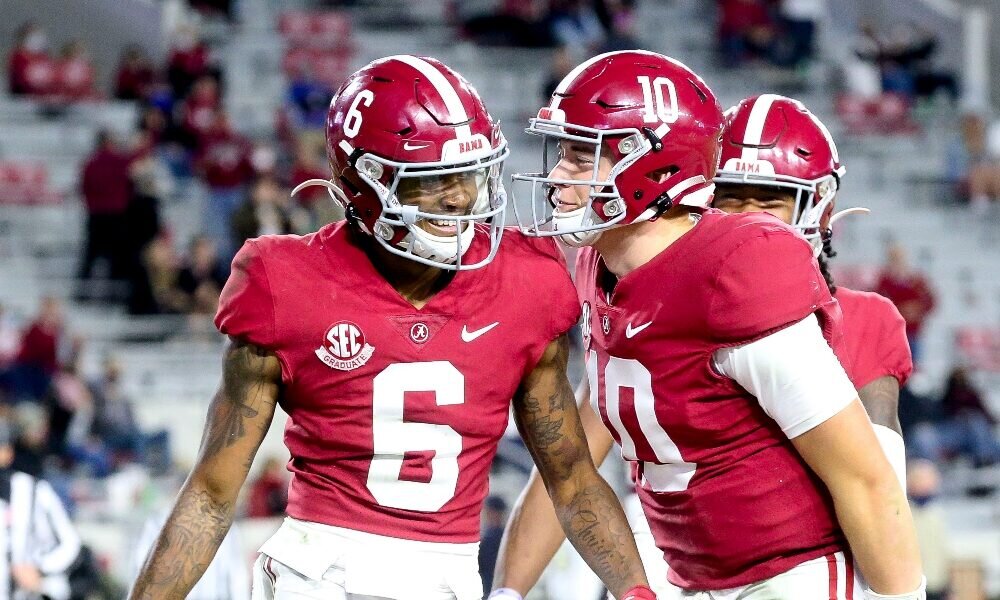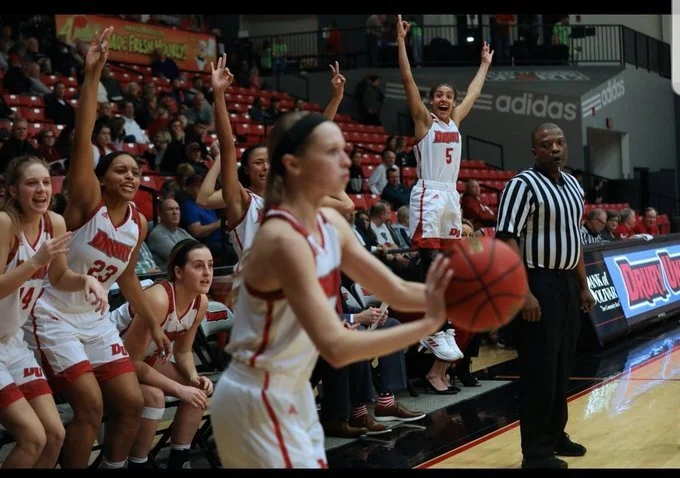How BAD do you want to be GOOD?
While DeVonta Smith and Mac Jones were fabulous on Monday night, I want to introduce you to a guy who never played a down for Alabama. You might even find him to be more inspiring. — Associated Press
You’ve probably been on social media long enough to know that seeing isn’t always believing.
With a little help from technology, an image or video can be transformed into something it’s not. Mostly, this is done with malicious intent.
But there are instances when a visual can really drive a point home, creating a powerful, positive and lasting impression.
Let me share a couple of examples I’ve used with players and their parents:
Let’s say you’re struggling to explain to a group of youngsters what a great bench should look during a basketball game. It might be better to show them this picture first:
Then add a simple phrase …
You may not always be ON the court, but you can always be IN the game.
That picture, along with those words, will brand that lesson into our memory.
Let’s say you’re struggling to explain to a group of youngsters what it means to honor a teammate on the floor. It might be better to show them this picture first:
Then add a simple phrase like …
Great teammates lift each other up.
That picture, along with those words, will brand that lesson into our memory.
When I work with young players on their game, I greet them with a question as soon as they step on the floor.
“How BAD do you want to be GOOD?”
Grammatically incorrect, I know. A little vague, for sure. But after a few lessons with me in the gym, they know EXACTLY what I mean: Are you willing to do more than is expected? Or do you want to be like everyone else?
The math is simple: If you want to be in the top 1 percent of whatever it is you do, then you have to be willing to do what the 99 percent AREN’T willing to do.
Case in point: Just 1 percent of all high school players move on to play Division I basketball. Do you know what percentage of players make 500 shots a day?
You got it, 1 percent.
So then I might prod to see what level of “bad” they want to hit that day.
“Bad?”
“Really bad?”
“Really, really bad?”
“Or SUPER bad?”
The best players always answer “super bad.” But what does that look like in practice? For months, I’ve been trying to secure an image that drives the point home. Something that SCREAMS “extra mile,” “over the top,” “110 percent,” “all in,” “super bad.”
I finally found it during Monday night’s college football championship game between Alabama and Ohio State. Maybe you caught some of the game, too. Maybe you’re guessing it’s footage of a Crimson Tide star.
Brilliant ’Bama receiver DeVonta Smith. Nope.
How about quarterback Mac Jones? Not him.
Then it has to be center Landon Dickerson, who tore his ACL a couple of weeks ago yet begged to be on the field for the final snap of his career. Not him either.
Even if you watched the telecast closely, there’s a good chance you still didn’t see him. Maybe a glimpse at best. Three days later, I don’t even know the guy’s name, but he’s inspired the heck out of me. I’m hoping he’ll do the same for you.
I’ll call him “Tee Guy,” for now. And other than Seattle’s DK Metcalf chasing down Budda Baker earlier this season to halt a certain pick six, I’m not sure I’ve seen a better example of doing more than is expected.
Please take a moment to watch the football manager from Alabama. I’m confident you’ll agree.
No helmet. No shoulder pads. No number or cleats. Just a burning desire to be the best at what he does — collecting the kicking tee and returning it to the sideline. With the Martin Luther King holiday approaching on Monday, it reminds me of his famous quote:
“If a man is called to be a street sweeper, he should sweep streets even as Michelangelo painted, or as Beethoven composed music or as Shakespeare wrote poetry. He should sweep streets so well that all hosts of heaven and earth pause to say: ‘Here lives a great sweeper who did his job well.’ ”
Tee Guy will never throw a touchdown pass for Nick Saban. He won’t catch one, or stop one, either. But there was someone on that sideline who watched him give his best Monday night. There was someone who was third-string on Monday night and never even sniffed the field. There’s a great chance that someone will become a starter next season because of Tee Guy’s example.
Because doing more than expected is contagious.
So the next time you hear me ask …
“How BAD do you want to be GOOD?”
Now you have a mental picture.
Now you have the Tee Guy burned into your brain.
Now I hope he’s inspired you to do more than is expected today.
Because 99 percent of us won’t.
Even after reading this far.
(Tim Kolodziej is the creator of EnspireU.com and author of this piece. If you would like to receive encouraging/inspiring messages, videos, and motivational stories each morning, text him at (412) 226-4977.)


